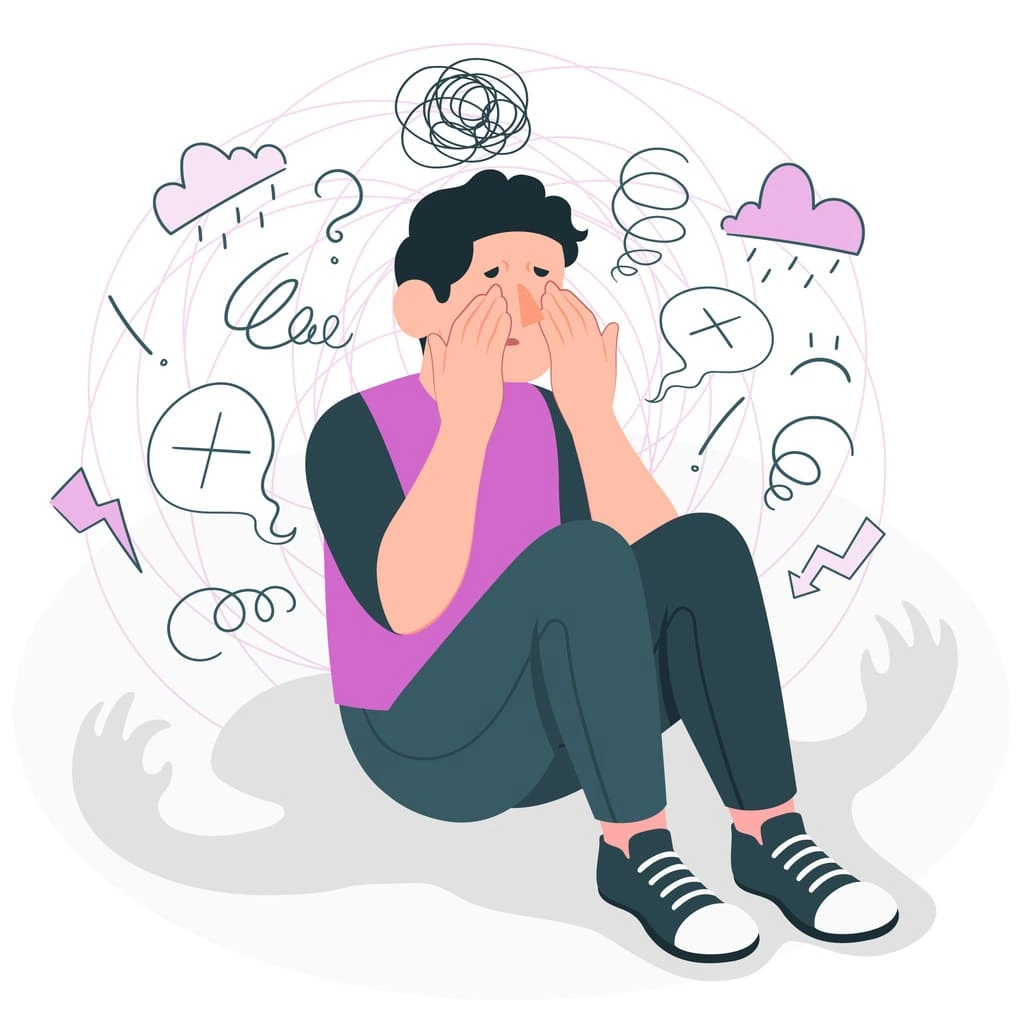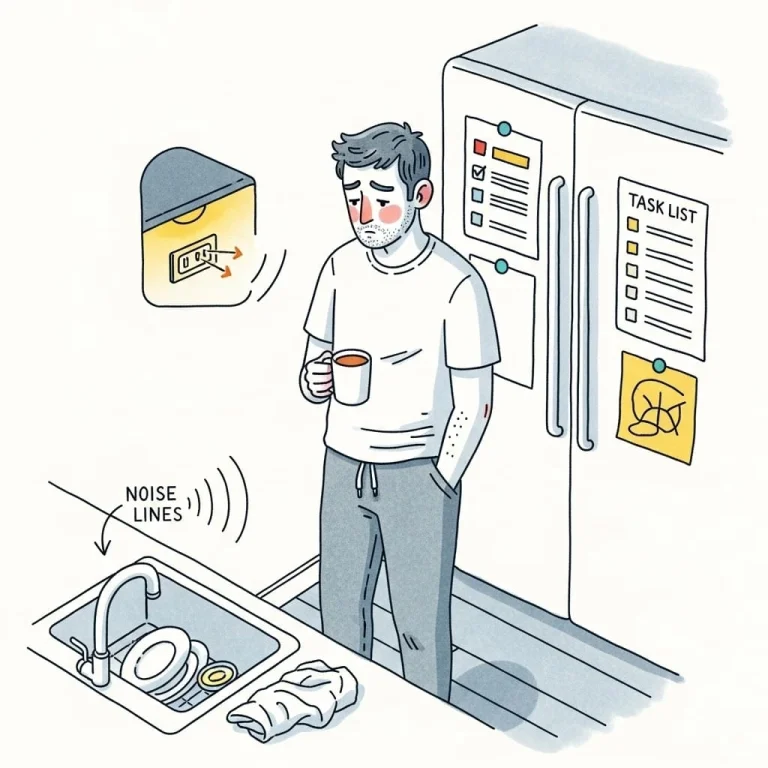What Is Self-harm?
Self-harm is when a person intentionally causes harm to themselves when feeling emotionally overwhelmed by different feelings, social triggers, situations or memories. People exhibit self-harmful behaviour when they feel life is difficult to cope with.
Experts suggest that sometimes people self-harm to change emotional pain into physical pain and relieve overwhelming emotions, thoughts, or memories.
Self-harm can be different for different people. For example, you may be doing harmful things but don’t see them as self-harm. Also, people sometimes find it hard to explain why they feel the need to self-harm.
Potential risk factors for self-harming include:
- Mental health conditions such as anxiety, depression, borderline personality disorder and eating disorders
- Childhood abuse or trauma
- Feeling socially discriminated against or excluded
- Feeling different from the people around you
- Transitional settings such as school or home changes
- Family issues
- Financial difficulties
- Bullying
- Sudden and unexpected changes in life, such as death, relationship breakup or divorce
- Low-self esteem
- Extreme pressure or criticism from family, friends or teachers
- Difficult feelings such as loneliness and isolation
- Physical health challenges
- Feelings of failure, remorse, guilt, or being unloved
- Alcohol or substance misuse
How Do People Display Self-Harm Behaviour?
Self-harm can take many forms and behaviours. Although it is usually associated with physical injuries, there are other ways in which a person can cause harm to themselves.
Here are some examples of how self-harm can look like:
- Head-banging
- Hand-biting
- Scratching
- Cutting
- Hitting walls
- Not eating, excessive eating, or forcing yourself to throw up
- Alcohol or substance misuse
- Addictive behaviours
- Getting into risky situations intentionally, such as fighting, or high-speed driving
In many cases, self-harm brings temporary relief. However, it is often followed by intense negative emotions after the self-harming behaviour, including feelings of shame, guilt or fear. This can turn into a habit, and when an emotional outburst occurs again, you may feel the need to repeat the self-harm activity.
Self-injury is a challenging experience for the person and their family, friends and other social circles. Fortunately, there are effective approaches and practices that can help people stop self-harming.
Unique Community Services provides professional and multi-faceted support to people with complex care needs. Our proactive strategies are based on implementing Positive Behaviour Support (PBS), that have shown outstanding results in supporting people with self-harm and challenging behaviour.
Signs of Self-Harm
Self-harming is often difficult to notice and recognise. In most cases, people who self-harm tend to keep it a secret from everyone, including friends and family and tend to hurt themselves in places that can be hidden with clothes.
Therefore, it is important to learn how to recognise the warning signs on time to help yourself or a loved one stop self-harming. Seeking appropriate mental health treatment can significantly improve the individual’s quality of life and prevent potentially life-threatening situations.
Here are the most common signs of self-harm.
Behavioural Signs
People who self-harm can show a range of behavioural symptoms, including:
- Covering all body parts even when the weather is hot
- Blaming injuries as frequent accidents due to clumsiness
- Spending too much time alone
- Challenges with family, friends and romantic relationships
- Having sharp objects always on hand
- Avoiding things and activities that used to cause joy and pleasure
- Irritability and impulsive behaviour
Physical Signs
Physical signs may be the most clear indicators of self-harming behaviour. For example, a person who self-harms may have:
- Missing hair patches
- Scratches, cuts or bruises
- Scars
- Burns
- Broken bones
Psychological Signs
Many people who self-harm also show a range of psychological symptoms that can indicate mental health challenges, including:
- Mood swings
- Emotional detachment
- Increased anxiety, particularly when being unable to self-harm
- Depression
- Low-self esteem
- Feelings of shame, guilt or repulsion
However, these symptoms can be easily confused with a mental health problem and might go misdiagnosed. Therefore, if you notice any of the symptoms mentioned above, do not hesitate to consult your GP, that will further refer you to appropriate health professionals.
Self-Harm in Children
The causes of self-harm in children can be complex and multifaceted. It’s essential to approach this issue with empathy and understanding, as self-harm is often a manifestation of more profound emotional, psychological, or social challenges that the child is facing.
Some possible causes or contributing factors for self-harm in children include:
- Mental health challenges
- Developmental differences such as learning disabilities, autism, or ADHD
- Trauma or abuse
- Bullying or peer pressure
- Physical or emotional abuse
- Challenges at home
It’s essential to recognise that self-harm is not attention-seeking behaviour but a sign that the child is distressed and needs understanding and emotional comfort. If you believe your child is self-harming or showing signs of distress, it’s crucial to consult mental health professionals who can evaluate the situation and address the symptoms.

Self-Harm in Teens
Self-harm in young people refers to intentional, self-inflicted harm or injury as a way to cope with overwhelming emotions, stress, or mental health difficulties. It is important to approach this situation with sensitivity and understanding, recognising that self-harm often reflects deep emotional pain and distress.
Common forms of self-harm in young people include cutting, burning, scratching, hitting, or other forms of self-injury that cause physical pain. Self-harm is a sign that the individual is struggling to cope with their emotions and requires compassionate help and support.
Are There Any Patterns of Self-Harm Related to Gender?
Research has shown that self-harm is more commonly reported among women than men. However, this may be due, in part, to underreporting in males due to stigma and societal expectations.
While self-harm might be used as a coping mechanism to deal with emotional pain, studies suggest that females may be more inclined to use it to express and externalise their internal struggles. At the same time, males may be more prone to suppress their emotions, potentially leading to more internalised behaviours.
However, both men and women require acceptance, understanding, and appropriate mental health support to address the underlying issues and develop more safe coping strategies.
What Ages Are at the Highest Risk for Engaging in Self-Harm?
Self-harm can affect individuals of all ages, but certain age groups may be at higher risk than others. The risk of self-harm can vary depending on the underlying inner and environmental factors individuals face at different stages of life.
Adolescence, ranging from ages 12 to 18, is a period of significant physical, emotional, and social changes. Adolescents often face increased stress, peer pressure, academic challenges, and identity issues, making them more susceptible to self-harm as a way to cope with their emotions and distress. Other risk ages include young adults aged 18-25 and middle-aged people.
Treatment and Support for Self-Harm
Parents or caregivers of a person with self-harming behaviour may initially feel confused and frightened. You may have trouble understanding what your child is going through and wonder what you can do to protect them from self-harm.
The first and most important step is to provide unconditional emotional support and comfort to your child. Next, don’t hesitate to ask for professional help and support as soon as possible. Consulting a mental health professional can make a massive and life-changing difference for people who self-harm and their family.
Your GP may refer you to Child and Adolescent Mental Health Services, where your child can receive an accurate diagnosis and instructions fur further mental health treatment and support.
The most common treatment options for self-harm include:
- Psychotherapy
- Support groups
- Cognitive behavioural therapy
- Lifestyle changes and home support
- Talking therapies
- Live-in care
Unique Community Services provides immediate short-term and long-term support for children and adults with self-harming behaviour and complex care needs. We are highly trained in identifying and preventing triggers that could lead to self-harm in individuals with ADHD, Autism, learning disabilities and other mental health needs.
Unique Community Services is Dedicated to Tackling and Reducing Self-Harm
At Unique Community Services, we provide proactive home care services for people experiencing self-harm and mental health challenges. Our outcome-based approach aims to remove the boundaries of social stigma around self-harm and provide person-centred, humanised care to people with complex care needs.
We specialise in providing Positive Behaviour Support (PBS) with our in-house PBS speech and language therapists who empower people to overcome challenges and reach their full potential.
Our experienced home care clinicians provide CQC-regulated support to children and adults with learning disabilities, Autism and complex care needs.
With offices in Leeds and Manchester, we deliver complex care and support across the UK.
Contact us now, and we will design a tailored care plan according to your specific needs and requirements.




